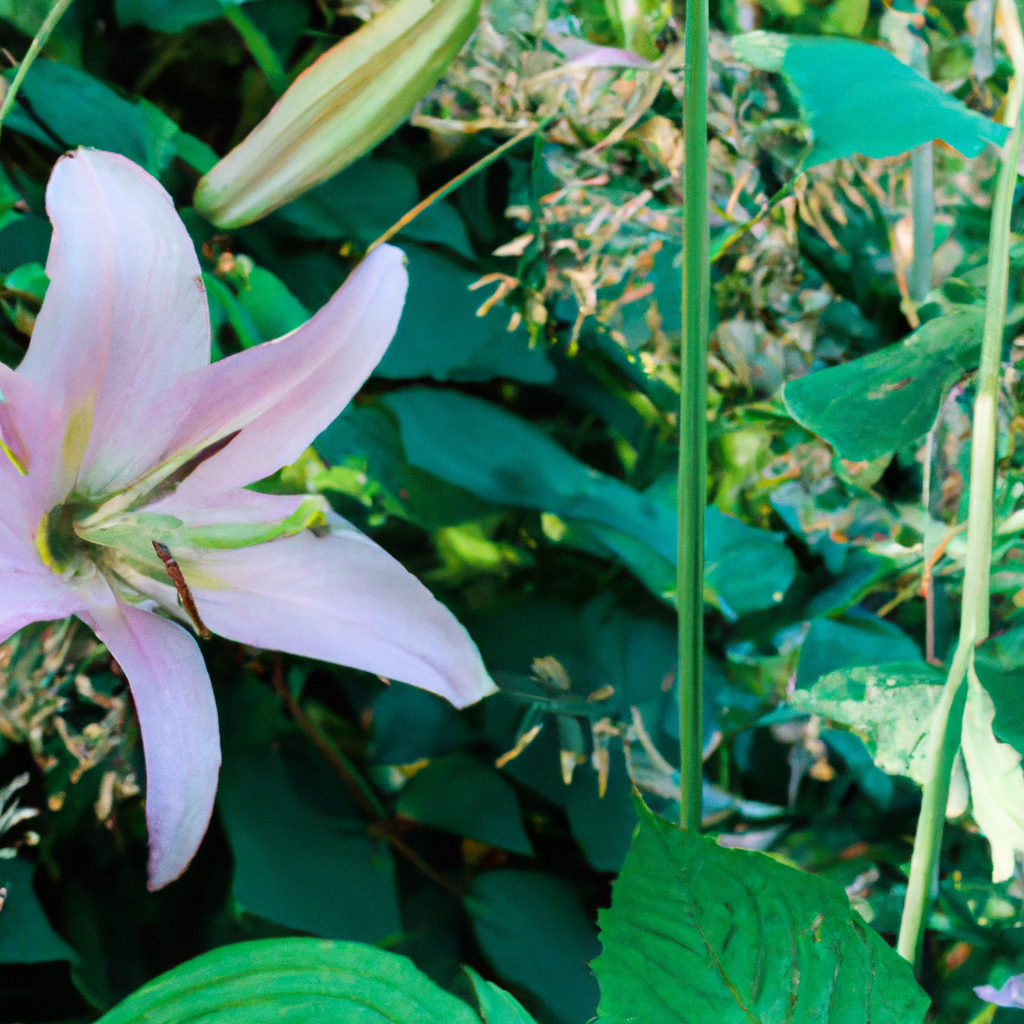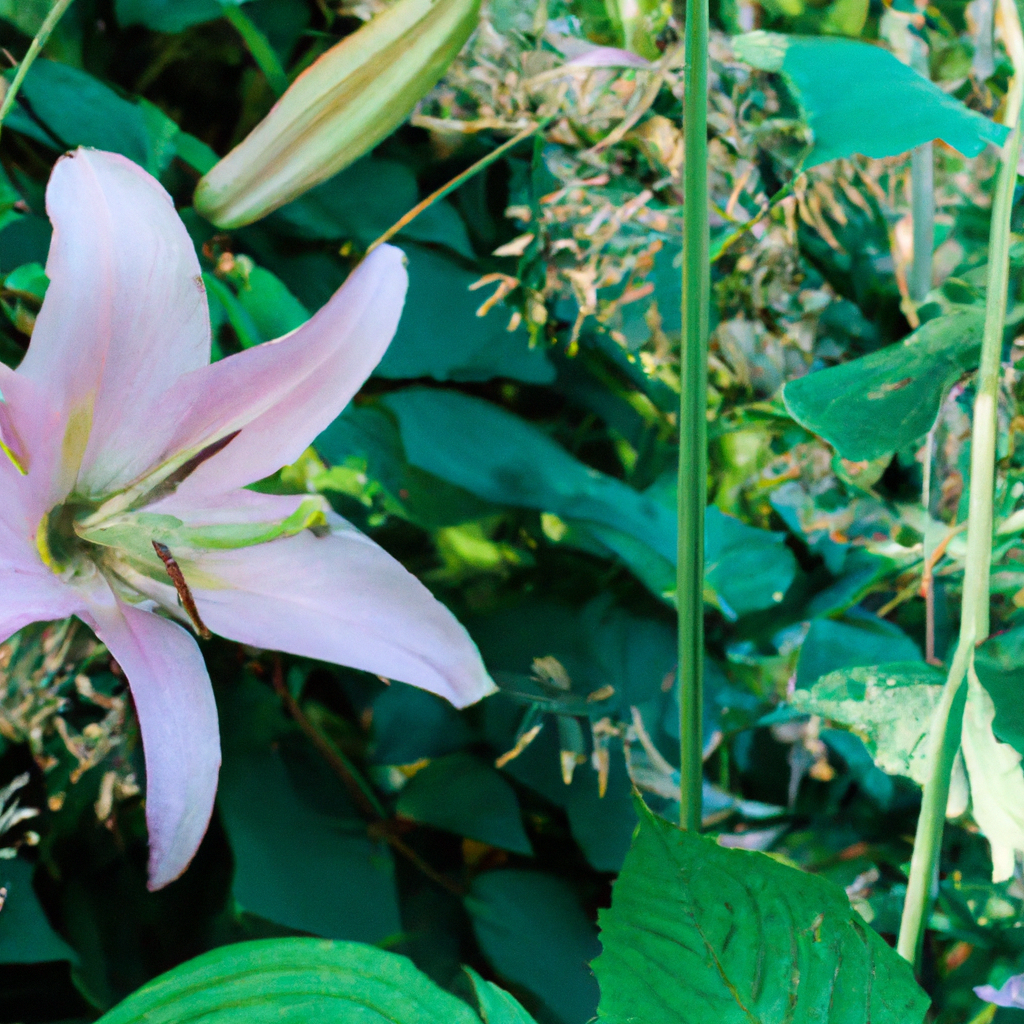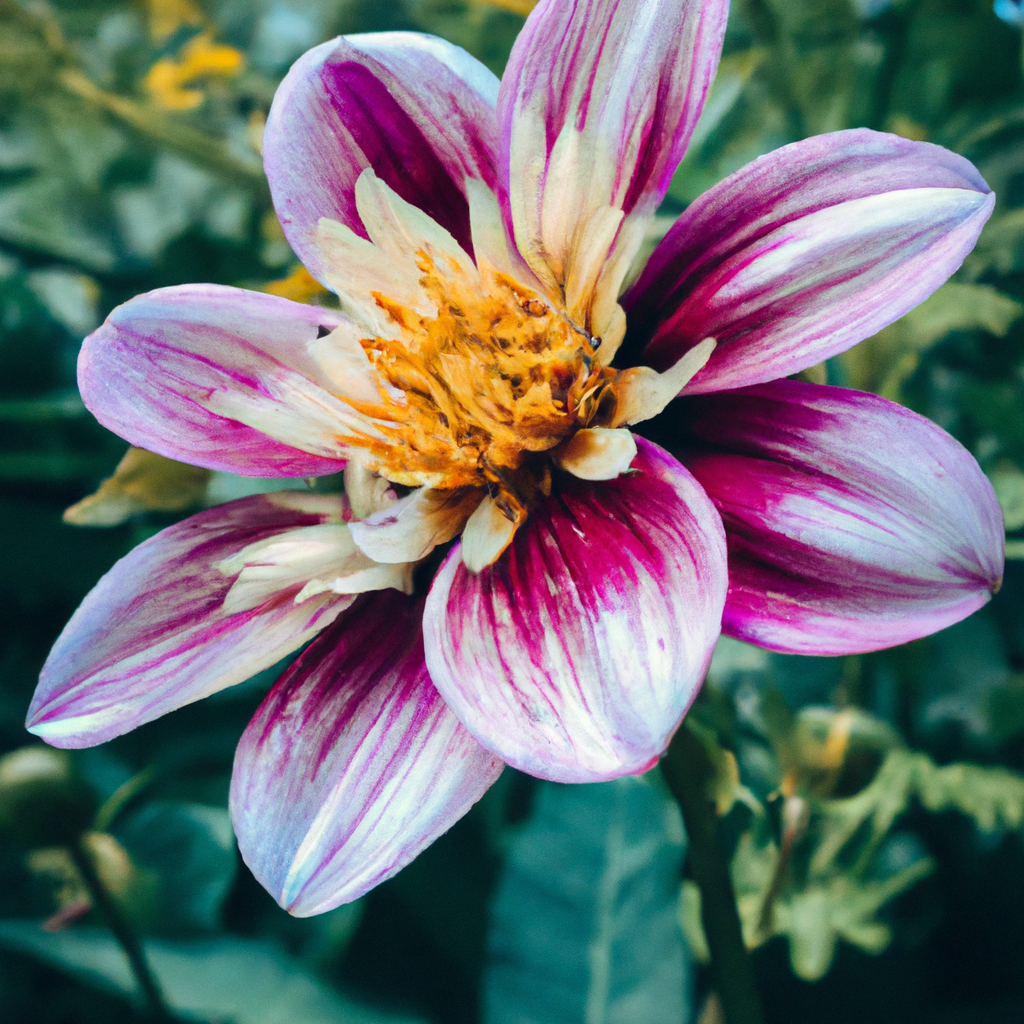
How Can I Find And Use Local Public Gardens Or Arboretums?
Looking to escape the hustle and bustle of the city and immerse yourself in nature’s beauty? Discovering and enjoying local public gardens or arboretums might just be the perfect answer. In this article, we will explore some simple yet effective ways for you to find these serene and lush green spaces in your community, as well as provide some tips on how to make the most of your visit. So, get ready to embark on a tranquil journey surrounded by vibrant flowers, towering trees, and peaceful paths that will leave you feeling refreshed and inspired.

Finding Local Public Gardens and Arboretums
Through Online Research
Finding local public gardens and arboretums has become much easier with the advent of the internet. By conducting online research, you can quickly locate these beautiful and educational places in your area. Simply use a search engine and enter keywords such as “public gardens near me” or “arboretums in my city.” The results will provide you with a list of options to explore.
Using Botanical Garden Directories
Another valuable tool for finding local public gardens and arboretums is by using botanical garden directories. These directories are specifically designed to help individuals locate and learn more about these natural treasures. They provide detailed information about each garden, including their location, opening hours, and any unique features they may have. Some popular directories to consider include the American Public Gardens Association’s Garden Finder and the Botanic Gardens Conservation International’s GardenSearch.
Visiting Local Tourism Websites
Many cities and regions have dedicated tourism websites that provide comprehensive information about local attractions, including public gardens and arboretums. These websites often have detailed listings of various tourist spots and can include descriptions, photos, and contact information for the gardens in your area. They are a convenient and reliable resource to discover new and enchanting public gardens that you may not have known about otherwise.
Asking Local Residents and Garden Enthusiasts
One of the best ways to find lesser-known public gardens and arboretums is by asking local residents and garden enthusiasts. They often have insider knowledge and can recommend hidden gems that may not be widely advertised. Reach out to your neighbors, friends, or colleagues who share an interest in gardening, and ask them about their favorite local gardens. You may be pleasantly surprised by the recommendations you receive, and you’ll have the advantage of visiting places that are loved by the local community.
Checking City or County Parks and Recreation Websites
Many public gardens and arboretums are maintained by city or county parks and recreation departments. Checking their websites can provide you with valuable information about these establishments. These websites typically outline the parks’ hours of operation, fees (if any), and any events or programs they offer. Keep an eye out for any garden-specific sections on these websites, as they often contain additional details and resources that can enhance your visit.
Understanding the Benefits of Local Public Gardens and Arboretums
Promoting Environmental Stewardship
Local public gardens and arboretums play a vital role in promoting environmental stewardship. These green spaces provide a sanctuary for plant and animal species, contributing to the conservation of biodiversity in our communities. By visiting and supporting these gardens, you actively participate in the preservation and restoration of our natural environment.
Conservation and Preservation of Plant Species
Public gardens and arboretums serve as living museums, preserving and showcasing a diverse range of plant species. These institutions often prioritize the cultivation and protection of endangered and rare plants, ensuring their survival for future generations. By visiting these gardens, you have the opportunity to learn about and appreciate these remarkable plants, contributing to their continued preservation.
Education and Learning Opportunities
Local public gardens and arboretums offer ample opportunities for education and learning. These spaces serve as centers for environmental education, providing workshops, guided tours, and interpretive exhibits. Visitors can deepen their understanding of plants, their ecosystems, and the importance of conservation. Moreover, many gardens offer specialized programs for children, allowing young minds to explore and discover the wonders of nature.
Recreation and Relaxation
In addition to their educational value, public gardens and arboretums provide spaces for recreation and relaxation. These well-maintained and serene environments offer a peaceful retreat from the hustle and bustle of everyday life. Taking a leisurely stroll through the gardens, enjoying the beautiful blooms and calming sounds of nature, can be incredibly rejuvenating, benefiting both your physical and mental well-being.
Supporting Local Communities
Public gardens and arboretums often rely on community support to thrive and continue their important work. By visiting and engaging with these institutions, you contribute to the local economy and help create employment opportunities. Moreover, many gardens rely on volunteers and donations, so your involvement can make a significant difference in their ability to maintain and enhance their facilities and programs. Supporting these gardens means investing in the beauty and sustainability of your community.

Exploring Public Gardens and Arboretums
Visiting During Different Seasons
One of the joys of public gardens and arboretums is witnessing the changing seasons and the transformations they bring. To fully appreciate the diverse beauty these spaces offer, plan multiple visits throughout the year. Spring brings colorful blooms and new growth, while summer showcases lush foliage and vibrant displays. In the fall, you can witness breathtaking foliage colors, and winter may surprise you with unique botanical treasures. Exploring these gardens throughout the seasons ensures you never miss out on the captivating wonders each period offers.
Attending Guided Tours and Workshops
To enhance your understanding and experience of public gardens and arboretums, consider attending guided tours and workshops. Experienced guides can provide insight into the gardens’ history, architecture, and plant collections, giving you a deeper appreciation for their significance. Workshops offered by these institutions allow you to develop your gardening skills and learn practical tips and techniques from experts. By participating in these events, you unlock a wealth of knowledge and make your visits even more rewarding.
Participating in Volunteer Programs
If you have a passion for gardening or want to contribute to the ongoing maintenance and improvement of public gardens and arboretums, look into their volunteer programs. These programs provide opportunities to get your hands dirty and have a direct impact on the care and development of these green spaces. Whether it’s planting new flower beds, weeding, or assisting with educational programs, volunteering allows you to give back to the community while fostering deeper connections with the gardens.
Exploring Various Garden Themes and Plant Collections
Public gardens and arboretums often feature specialized garden themes and plant collections, showcasing the incredible diversity of flora from around the world. Take the time to explore these various gardens within the larger establishment. You may find Japanese gardens, rose gardens, or even desert gardens, each offering a unique atmosphere and selection of plants. By immersing yourself in different themes, you’ll broaden your plant knowledge and discover new favorites.
Utilizing Amenities and Facilities
When visiting public gardens and arboretums, be sure to take advantage of the amenities and facilities available to visitors. Many gardens have comfortable seating areas, picnic spots, and designated areas for children to play. Some may even offer cafes or gift shops where you can indulge in refreshments or purchase nature-inspired souvenirs. Utilizing these amenities allows you to fully enjoy your time at the gardens and create lasting memories.
Preparing for a Visit
Checking Operating Hours and Entry Fees
Before embarking on your visit to a public garden or arboretum, it’s essential to check their operating hours and any entry fees that may apply. Each establishment may have different opening and closing times, especially during holidays or special events. By checking their website or contacting their visitor center, you can ensure your visit aligns with their schedule. Additionally, be aware of any entry fees and prepare accordingly to make the most of your visit.
Considering Weather Conditions
Weather conditions can greatly impact your experience at a public garden or arboretum. Take into account the forecasted weather for the day of your visit and dress accordingly. Wear comfortable walking shoes, dress in layers to adapt to temperature changes, and don’t forget to bring a hat and sunscreen for sun protection. If rain is predicted, pack an umbrella or raincoat to ensure you can continue exploring the gardens regardless of the weather.
Bringing Necessary Equipment
To fully enjoy your visit, pack a few essential items that will enhance your experience. Bringing a water bottle is essential to stay hydrated, especially during warmer months. A camera or smartphone can capture the beauty of the gardens, allowing you to relive your visit. Consider bringing a notepad or journal to jot down any interesting plant species, garden design ideas, or personal reflections. Lastly, having a map or guidebook of the garden can be useful for navigation and identifying particular areas of interest.
Researching Garden Policies and Rules
To ensure a respectful and enjoyable visit for all visitors, familiarize yourself with the garden’s policies and rules. Some gardens may have specific guidelines regarding prohibited items, areas that are off-limits, or rules for interacting with plants and wildlife. Taking a few minutes to review these policies beforehand will help you have a smooth and considerate visit, while also ensuring the gardens and their inhabitants are protected.
Planning with Children or Pets
If you’re planning to visit a public garden or arboretum with children or pets, it’s important to make appropriate preparations. Some gardens may have specific guidelines regarding the presence of children and pets, so check their website or contact the garden directly for information. Consider bringing snacks or activities to keep young ones engaged and entertained during the visit. For pets, ensure they are well-behaved and adhere to any leash or pet-friendly regulations in place.

Getting the Most Out of a Public Garden or Arboretum Visit
Engaging with Garden Staff and Volunteers
During your visit to a public garden or arboretum, don’t hesitate to engage with the knowledgeable staff and volunteers present. They are passionate about sharing their expertise and can provide valuable insights about the garden’s history, plant collections, or ongoing projects. Ask questions, seek recommendations, and listen to their stories. By connecting with these dedicated individuals, you gain a deeper appreciation for the gardens and their mission.
Reading Signage and Plant Labels
Public gardens and arboretums often provide informative signage and plant labels throughout their grounds. Take the time to read these markers, as they provide valuable information about the plants’ names, origins, and significant characteristics. Understanding the unique qualities of the plants you encounter enriches your experience and allows you to take away valuable knowledge. Additionally, reading signage about the garden’s history and features enhances your overall understanding and appreciation for the space.
Utilizing Interactive Displays and Exhibits
Many public gardens and arboretums offer interactive displays and exhibits that facilitate hands-on learning. These exhibits may focus on plant lifecycle, ecosystems, or the importance of pollinators. Take advantage of these engaging resources and explore them at your own pace. By actively participating in these displays, you deepen your understanding of the natural world and strengthen your bond with the garden.
Attending Events and Special Programs
Public gardens and arboretums often host events and special programs throughout the year. These can include seasonal festivals, plant sales, art exhibitions, or even live performances. Keep an eye on the garden’s calendar of events, and plan your visit around these unique offerings. Attending these events provides an extra layer of enjoyment and allows you to immerse yourself in the garden’s vibrant community.
Taking Photographs and Keeping Journals
To preserve the memories of your visit to a public garden or arboretum, consider taking photographs and keeping a journal. Photographs capture the beauty and uniqueness of the gardens, allowing you to revisit those moments later on. A journal can be used to document your observations, thoughts, and any newfound knowledge gained during your visit. By documenting your experiences, you create a personal record that can be cherished for years to come.
Contributing to Public Gardens and Arboretums
Becoming a Member or Patron
If you find yourself frequently visiting and enjoying a particular public garden or arboretum, consider becoming a member or patron. Many gardens offer membership programs that provide exclusive benefits such as free or discounted entry, invitations to members-only events, or priority access to workshops and classes. By joining as a member, you provide ongoing support to the garden’s operations and contribute to their long-term sustainability.
Making Donations and Contributions
Public gardens and arboretums often rely on donations and contributions from the community to continue their important work. If you are unable to become a member or patron, consider making a one-time or recurring donation to your favorite garden. These contributions go towards various initiatives such as plant conservation, infrastructure development, or educational programs. Even a small donation can make a significant impact and help these institutions thrive.
Supporting Fundraising Events
Gardens frequently organize fundraising events to generate financial support and create a sense of community. Keep an eye out for these events and consider attending or contributing. Fundraising events can range from galas and auctions to plant sales and walkathons. By participating in these events, you not only provide valuable financial support but also have the opportunity to connect with like-minded individuals who share your love for public gardens and arboretums.
Volunteering for Maintenance and Improvement Projects
Public gardens and arboretums often rely on dedicated volunteers to assist with various maintenance and improvement projects. Whether it’s planting flowers, removing weeds, or assisting with event setup, your time and effort can make a tangible difference. Volunteering offers a chance to give back to the community, connect with fellow garden enthusiasts, and create a lasting impact on the garden’s development.
Spreading the Word and Encouraging Others
One of the simplest yet impactful ways to contribute to public gardens and arboretums is by spreading the word and encouraging others to visit. Share your positive experiences on social media, write reviews about your favorite gardens, or recommend them to friends and family. By raising awareness and generating interest, you help these institutions grow their visitor base and ensure their continued success.

Benefits of Joining a Local Gardening Club or Society
Networking with Fellow Garden Enthusiasts
Joining a local gardening club or society provides a fantastic opportunity to meet and connect with fellow garden enthusiasts. These communities offer a supportive and welcoming environment where you can share your love of gardening, exchange ideas, and seek advice. By networking with like-minded individuals, you expand your knowledge, learn new techniques, and form lasting friendships centered around your shared passion for public gardens and arboretums.
Access to Special Events and Discounts
Many gardening clubs and societies have partnerships with public gardens and arboretums, providing their members with exclusive benefits. These can include access to special events, guided tours, or even discounted entry fees. By joining a local club or society, you gain access to these unique opportunities, allowing you to further explore and enjoy the gardens in your community.
Participating in Gardening Workshops and Classes
Gardening clubs and societies often organize workshops and classes that cater to various skill levels and interests. These educational opportunities cover a wide range of topics such as plant propagation, garden design, or specific plant care techniques. Participating in these workshops allows you to enhance your gardening skills, expand your knowledge, and learn from experienced instructors. Furthermore, the camaraderie among fellow attendees creates a supportive environment for sharing and learning.
Plant and Seed Exchanges
One of the joys of gardening is expanding your collection of plants and trying new varieties. Gardening clubs and societies frequently organize plant and seed exchanges, where members can trade their surplus plants or seeds with one another. This practice not only allows you to acquire new plants without purchasing them but also promotes a sense of community, as you share your gardening successes and contribute to the growth of others’ gardens.
Sharing Gardening Tips and Experiences
A local gardening club or society provides an ideal platform for sharing gardening tips and experiences with fellow enthusiasts. Group discussions, newsletters, or online forums allow members to exchange valuable advice, troubleshoot common gardening challenges, and celebrate successes. Through these interactions, you gain insights from others’ experiences, learn innovative approaches, and gain a fresh perspective on your own gardening practices.
Exploring Community Gardens
Finding Nearby Community Gardens
Community gardens are wonderful spaces that serve as gathering places, promote the sharing of knowledge, and supply fresh produce for participants. To find nearby community gardens, start by reaching out to local gardening clubs, contacting your city’s parks and recreation department, or searching online directories. These resources can provide you with a list of community gardens in your area, along with information on how to get involved.
Getting Involved in Community Garden Projects
Once you have located nearby community gardens, consider getting involved in their projects. Community gardens often rely on individuals from the community to participate in various activities, such as planting, weeding, or maintaining common areas. By actively contributing to these projects, you become an integral part of the garden’s growth and create connections with fellow community members.
Learning about Urban Agriculture
Community gardens are an excellent opportunity to learn about urban agriculture and sustainable food production. These gardens showcase innovative gardening techniques that allow people to grow their own food in limited spaces. By engaging with community garden projects, you can gain practical knowledge about organic gardening, composting, and pest control methods suitable for urban environments. This knowledge can be applied to your own gardening endeavors or inspire you to create similar initiatives in your community.
Enhancing Food Security
Community gardens play a significant role in promoting food security within communities. By growing fresh produce locally, these gardens reduce reliance on distant supply chains and provide community members with access to nutritious, affordable food. In addition to benefiting individual participants, community gardens often donate surplus produce to local food banks or charities, ensuring that everyone has access to healthy food options.
Promoting Social Interaction and Inclusion
Community gardens are vibrant and inclusive spaces that promote social interaction and foster a sense of belonging. These gardens bring together individuals from diverse backgrounds and provide opportunities for community members to meet, share their experiences, and work towards a common goal. By participating in community garden projects, you contribute to the creation of a welcoming and inclusive environment where everyone’s contribution is valued.

Promoting Sustainable and Eco-friendly Practices
Supporting Organic Gardening Methods
Public gardens and arboretums often prioritize organic gardening practices, which involve avoiding synthetic pesticides and fertilizers and promoting natural and sustainable alternatives. By adopting these methods in your home garden, you contribute to a healthier environment by minimizing the use of harmful chemicals. Organic gardening promotes soil health, biodiversity, and the overall well-being of plants and ecosystems.
Utilizing Composting and Recycling
Composting and recycling are essential practices that promote sustainable gardening. Composting allows you to turn kitchen scraps and garden waste into nutrient-rich organic matter, improving soil fertility and reducing the need for chemical fertilizers. Additionally, recycling garden-related items, such as plastic pots or packaging, contributes to waste reduction and minimizes environmental impact. By incorporating composting and recycling into your gardening routine, you actively reduce waste and support a more sustainable future.
Conserving Water and Energy
Conserving water and energy are vital considerations for eco-friendly gardening. Public gardens and arboretums often employ water-wise irrigation techniques, such as drip irrigation or rainwater harvesting systems, to minimize water usage. Adopting these techniques in your home garden, along with planting native or drought-tolerant species, reduces water consumption and supports the local ecosystem. Additionally, using energy-efficient tools and equipment, such as solar-powered garden lights or battery-operated tools, contributes to minimizing your carbon footprint.
Planting Native and Drought-Tolerant Species
Planting native and drought-tolerant species in your garden is a sustainable and eco-friendly choice. Native plants are well-adapted to local environmental conditions, requiring less water, fertilizer, and pest control. These species also provide crucial habitat and food sources for local wildlife, contributing to the overall biodiversity of your area. By selecting drought-tolerant species, you reduce water consumption and minimize the need for artificial irrigation, promoting a more sustainable and resilient garden.
Reducing Chemical Pesticides and Fertilizers
Minimizing the use of chemical pesticides and fertilizers is an essential step towards creating an eco-friendly garden. Public gardens and arboretums often employ integrated pest management techniques that prioritize natural pest control methods, such as attracting beneficial insects or practicing companion planting. By adopting these approaches in your own garden, you reduce the reliance on potentially harmful chemicals, creating a healthier environment for both plants and the wider ecosystem.
Conclusion
Finding and exploring local public gardens and arboretums offers a multitude of benefits for individuals, communities, and the environment. These enchanting spaces provide opportunities for environmental stewardship, conservation, education, and relaxation. By preparing for your visit, engaging with the gardens, and contributing to their sustainability, you actively become a part of the transformative power these places hold. So, whether you’re seeking inspiration for your own garden, wish to connect with fellow garden enthusiasts, or simply want to immerse yourself in nature’s wonders, local public gardens and arboretums are waiting to welcome you with open arms. Start exploring and discover the beauty and magic that lies just around the corner.




